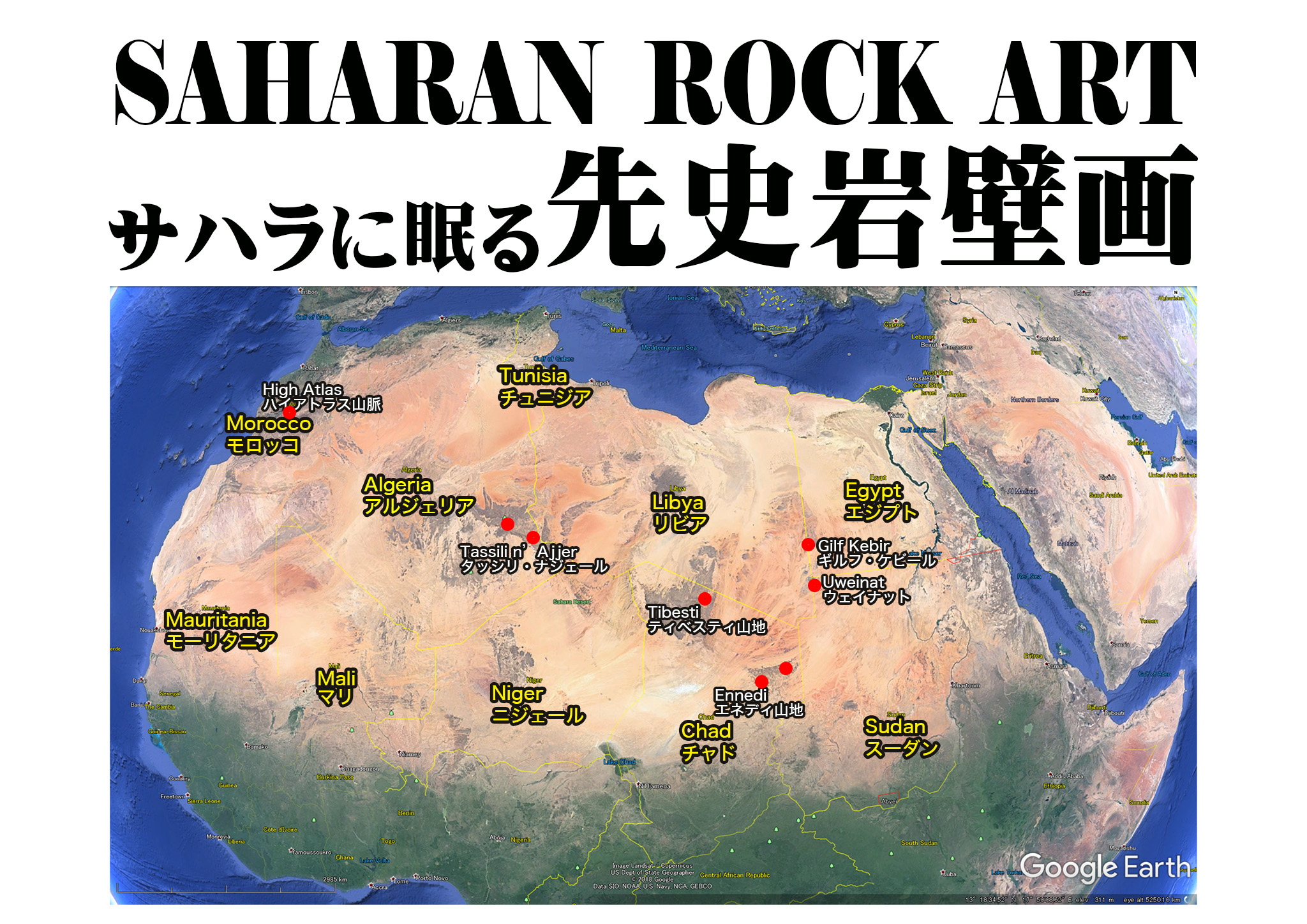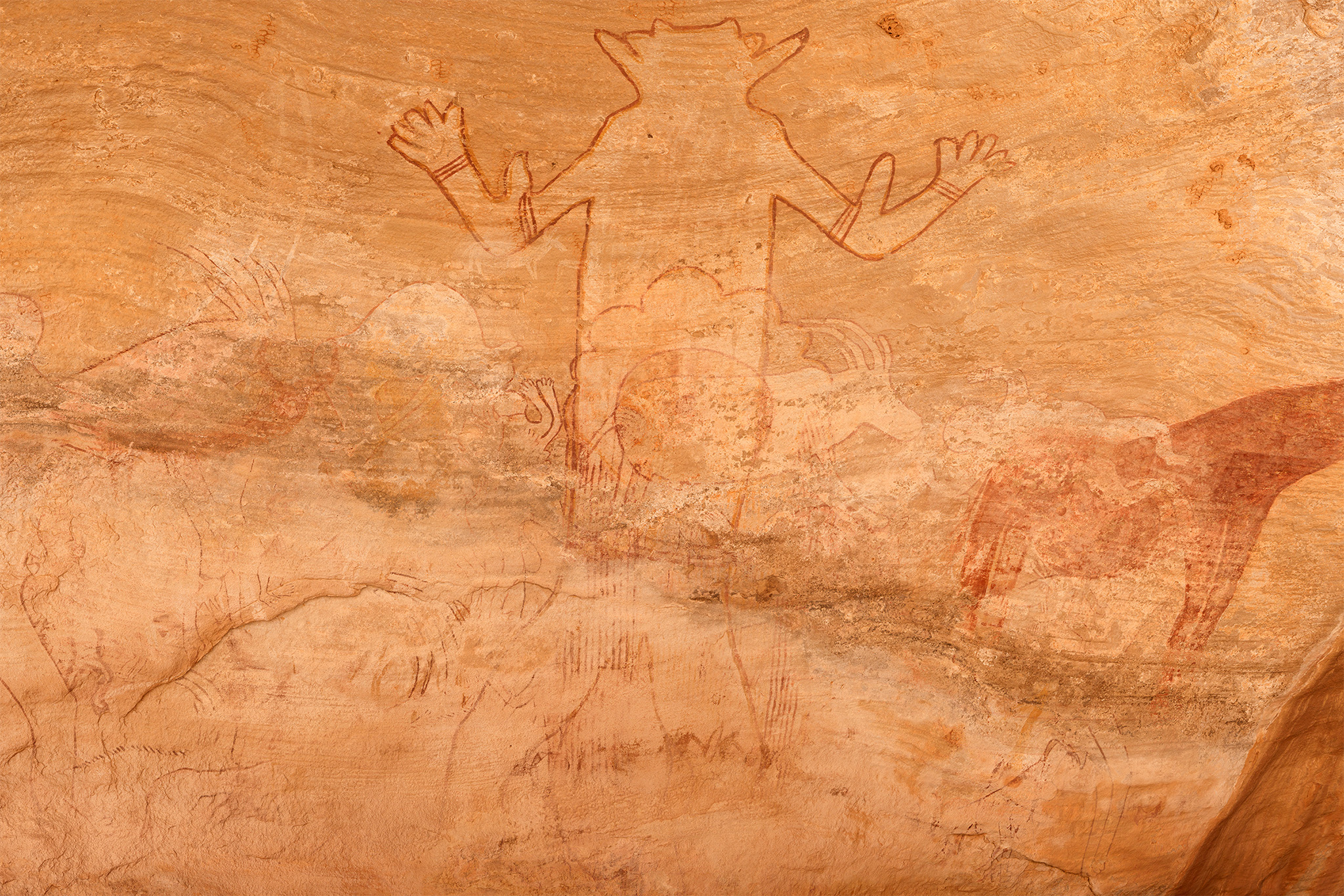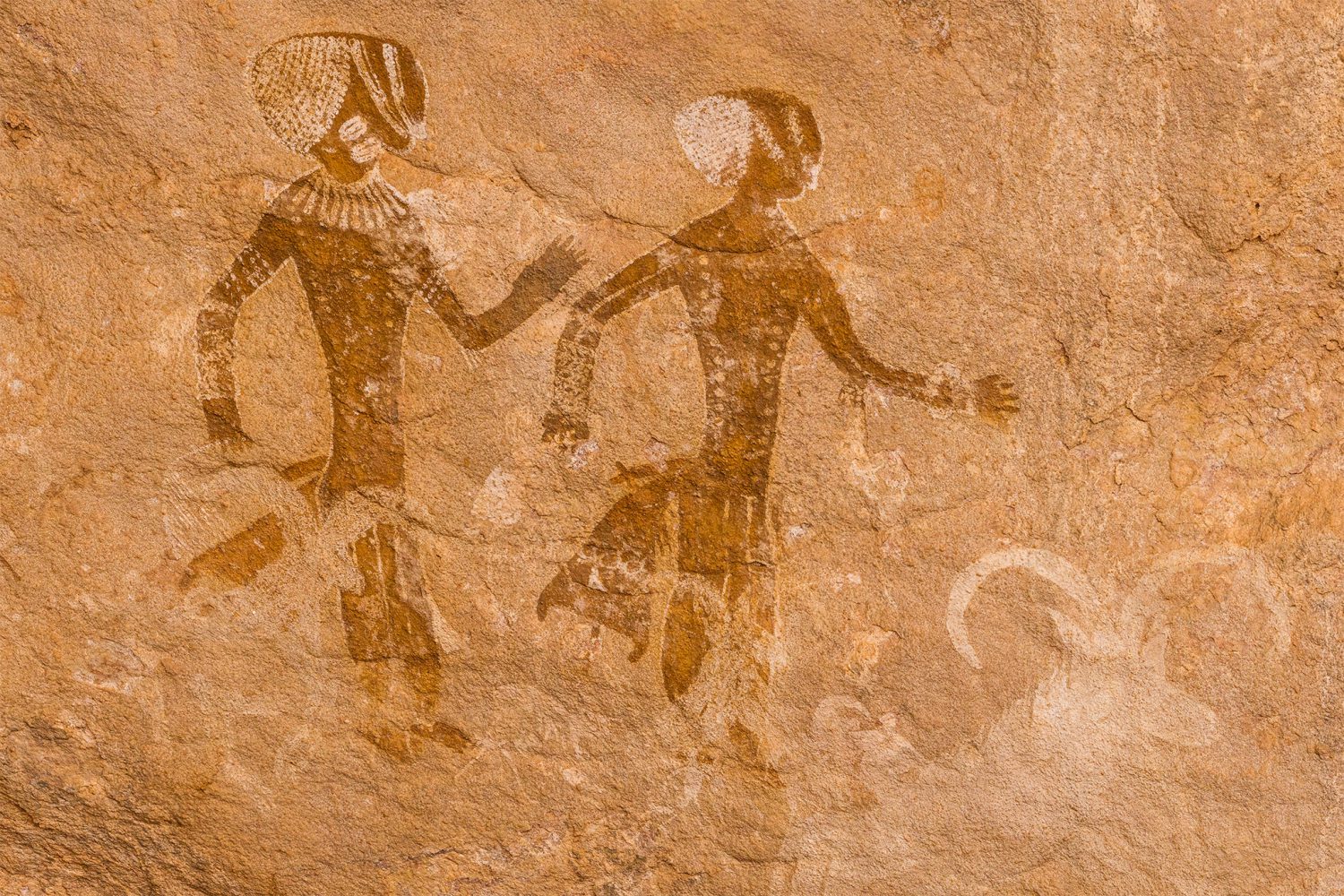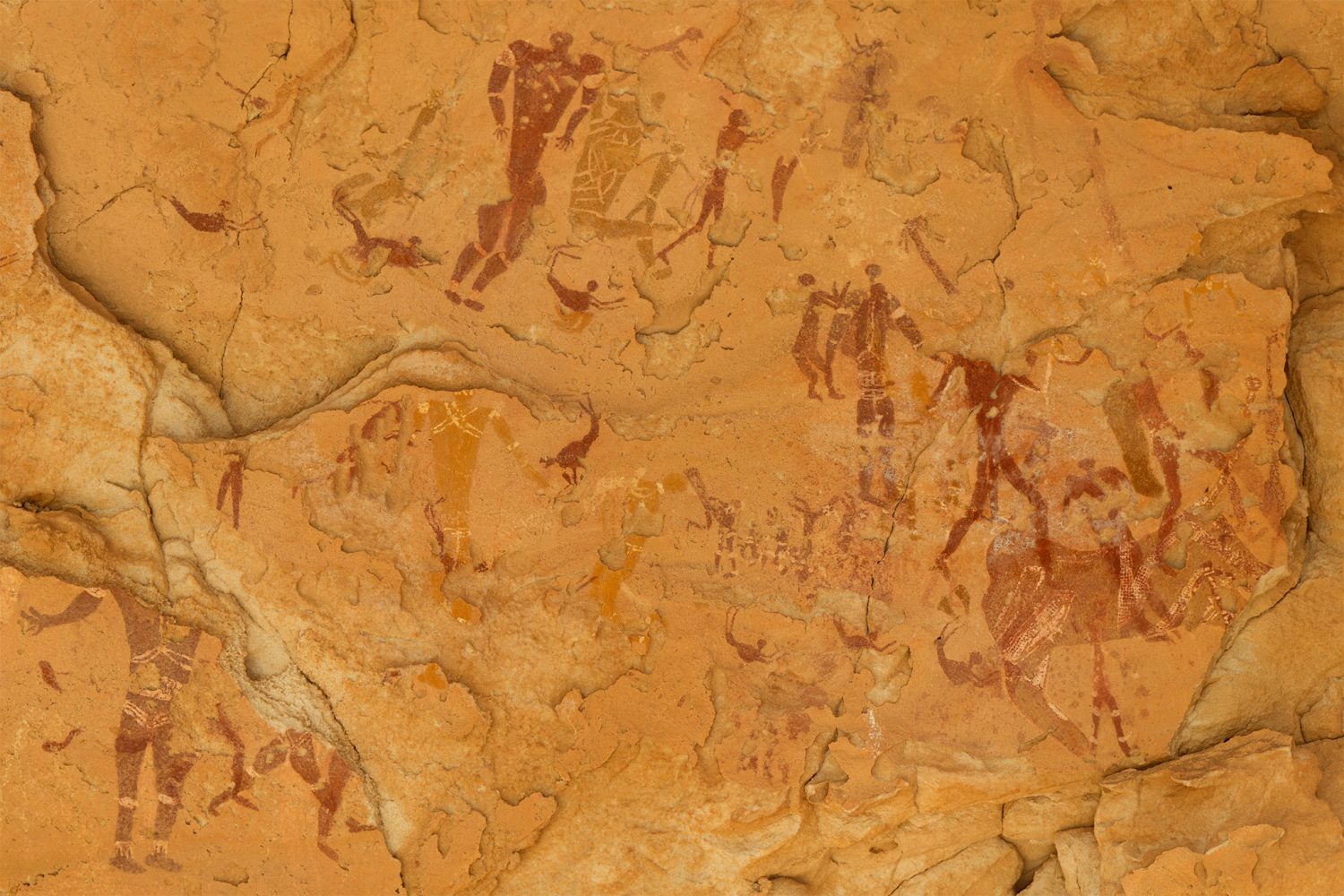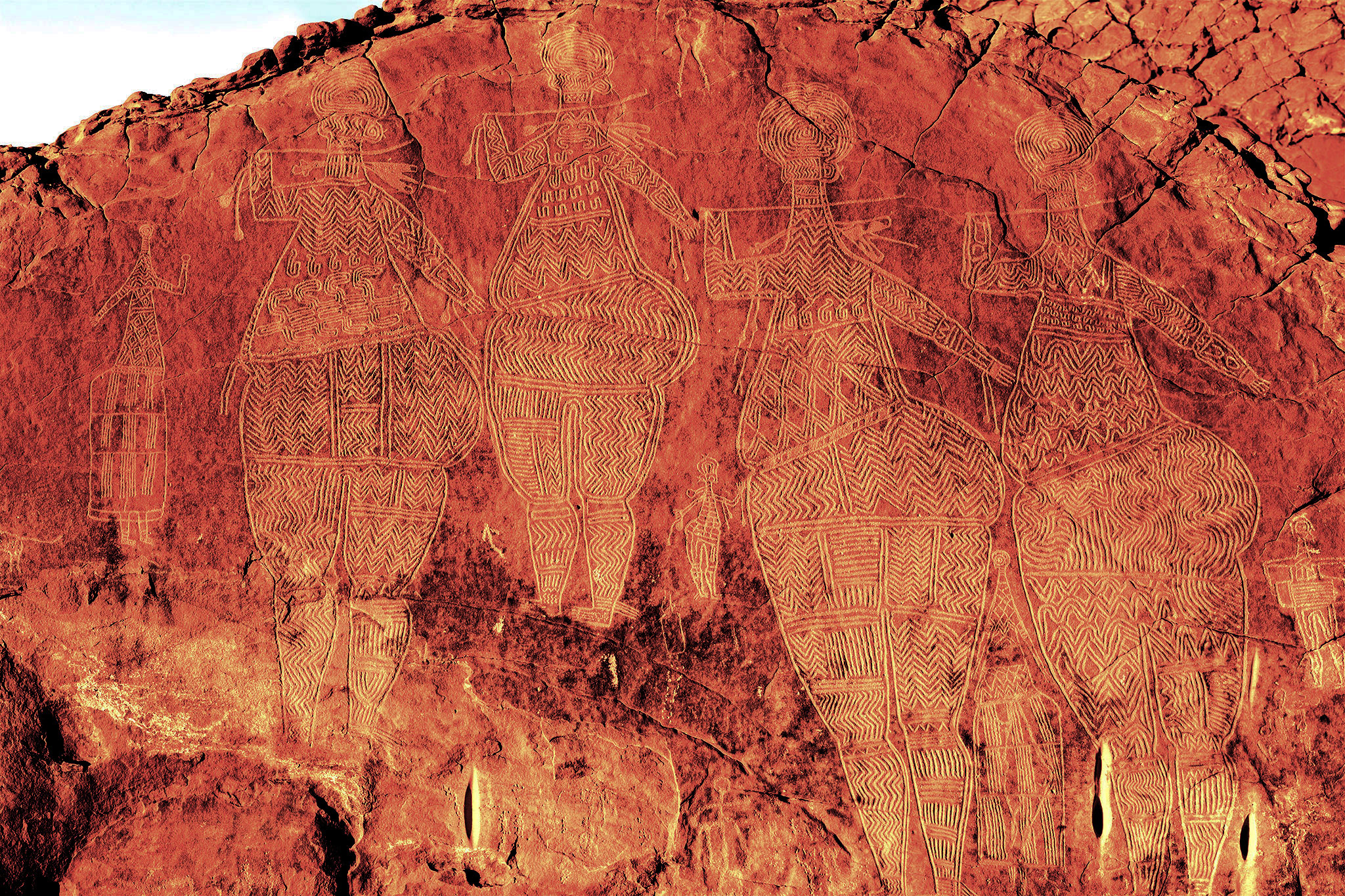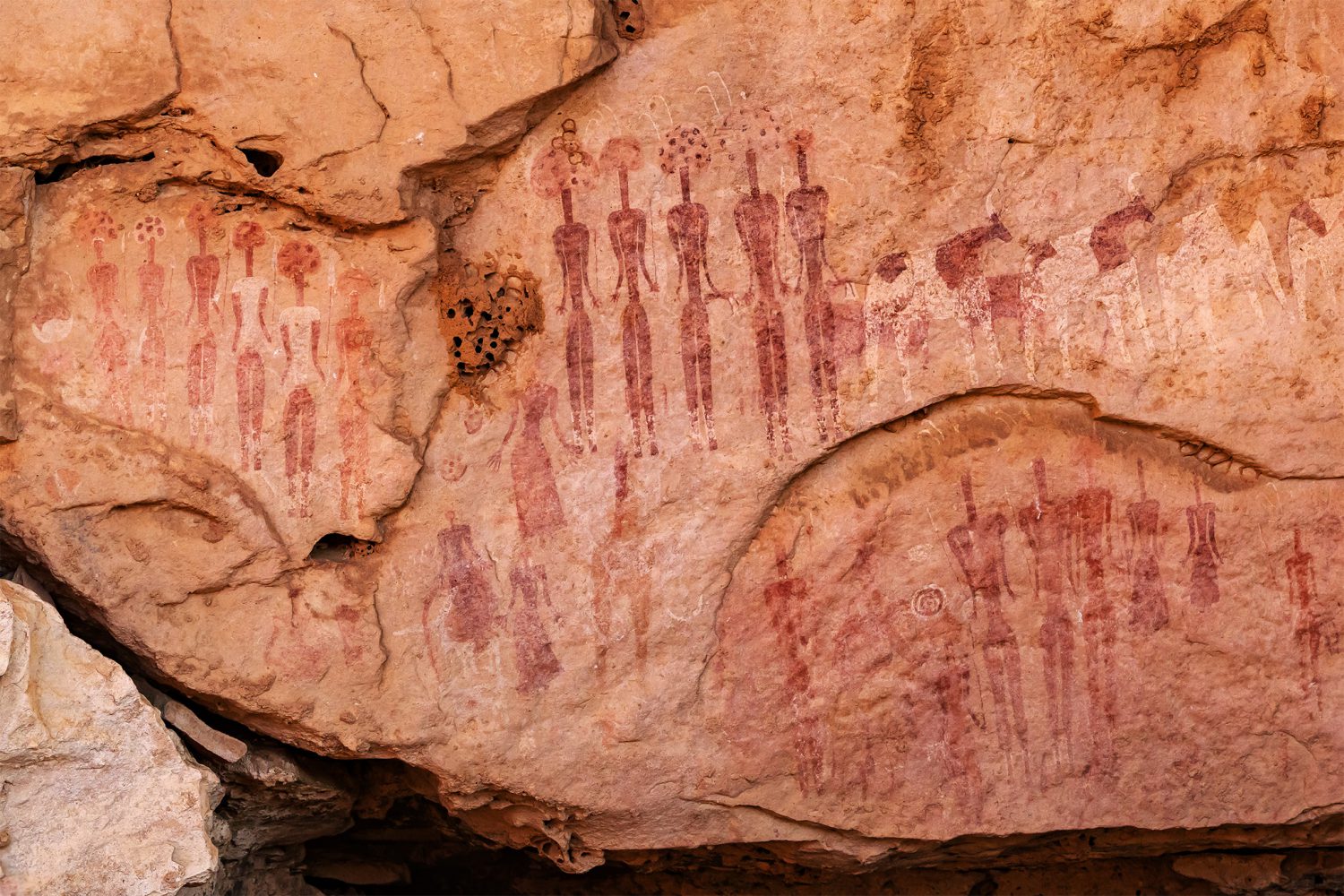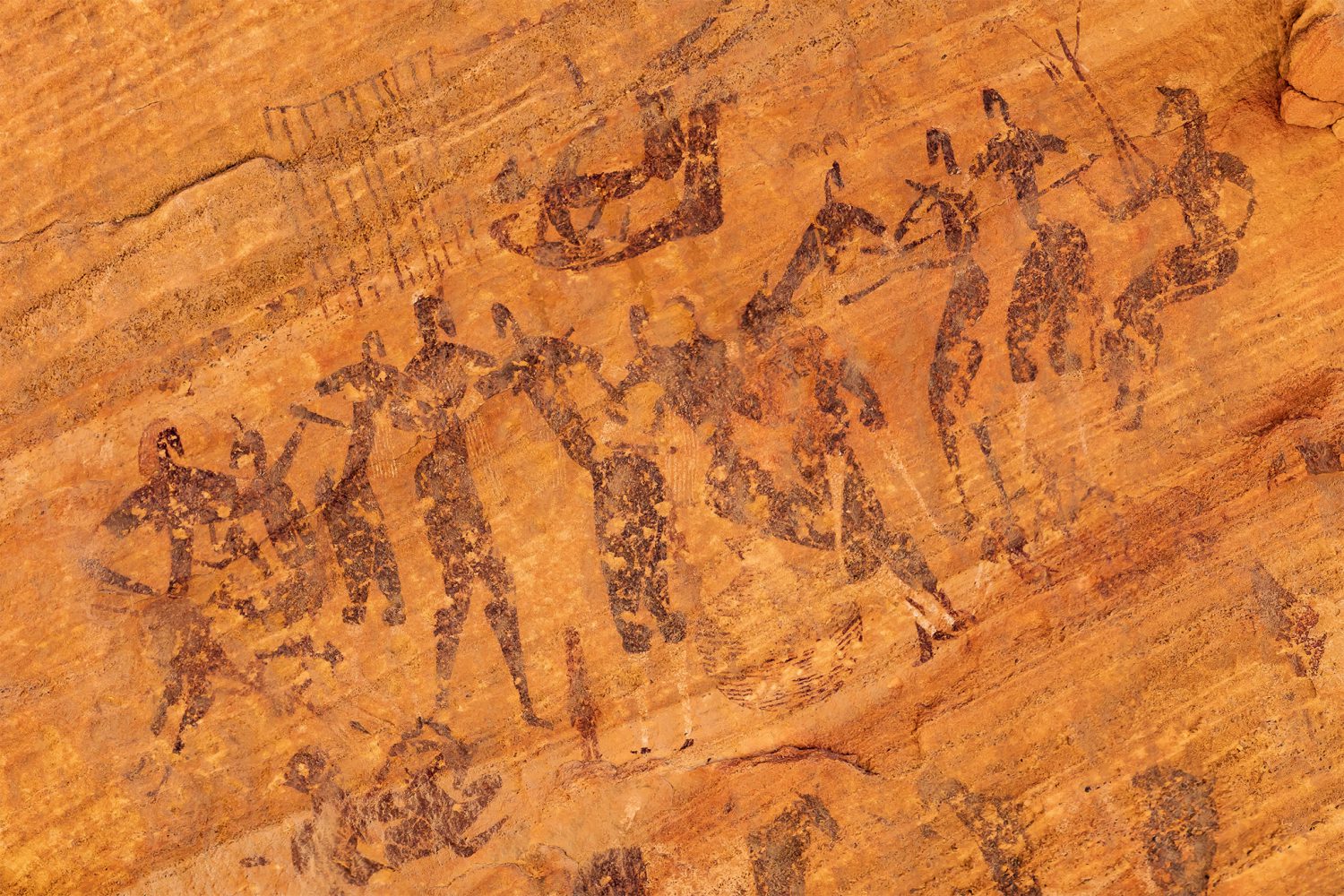The exhibition was attended by 850 people and was a great success. Thank you very much.
SAHARAN ROCK ART
HERE COMES “GREAT GOD OF TASSILI”!
October 5 (Wed) – 10 (Mon), 2022
Meguro Art Museum, Citizens Gallery
2-4-36 Meguro, Meguro-ku, Tokyo JAPAN
Admission Free 10:15 – 17:45, 14:00 on October 10
ACCESS MAP
10 minutes walk from JR Meguro Station
PDF Catalog
Original Panoramic Photos
850人の方にご鑑賞いただき、盛況裏に終了しました。ありがとうございました。
サハラに眠る先史岩壁画
「白い巨人」が東京にやってくる!
2022年10月5日(水)~10月10日(月)
目黒区美術館区民ギャラリー
東京都目黒区目黒2-4-36
入場無料 開場時間10:15~17:45, 10月10日は14:00まで
ガイドツアー(日本語30分)11:00(初日除く), 13:00, 15:00, 17:00
アクセス地図
JR目黒駅より徒歩10分
PDF図録
パノラマ写真(原画)
What did prehistoric people paint and why did they decide to do so? This is a good opportunity to consider the origins of human art. Also, think about the Sahara Desert, which is now almost uninhabitable, but 8,000 years ago was a rich land with many animals and people. In addition to daily scenes of hunting, herding, encounters between men and women, and wars of men and women, there are also scenes that remind us of the existence of gods and the afterlife. The rich culture of prehistoric peoples can be felt.
先史時代の人々はどのような絵を描いていたのでしょうか、また、なぜ描こうと思ったのでしょうか。人類のアートの原点を考える良い機会です。また、今はほとんど人の住めないサハラ砂漠ですが、8000年前には多くの動物と人々が暮らす豊かな土地であったことに思いを馳せましょう。狩、牧畜、男女の逢瀬、男たちや女たちの戦争など日々の場面に加えて、神の存在や死後の世界を想起させる場面も描かれています。先史時代人の豊かな文化が感じ取れます。
The Sahara desert – the largest desert in the world – had periods called “Green Sahara”. From about 11,500 years ago until about 5,000 years ago the Sahara was fully covered with vegetation. At this time, various groups of people came to reap the benefits of this fertile land. Each of these groups left their own unique art in the form of rock paintings and engravings.
The Upper Paleolithic Cave Art, such as Lascaux and Altamira, etc., show mostly wild animals in naturalistic style. Human figures are rarely depicted, but when they are they are drawn in a simplistic style. On the other hand, the Saharan Rock Art, from the late Paleolithic age to the Neolithic age, show not only animals but also elaborate images of humans in various forms of activity. They cover a wide gamut of subjects ranging from every day life to the spiritual world. The Saharan Rock Art shows an important evolution in the development of man and art.
At this exhibition, all photos of the Rock Art are reproduced at their actual size and the beholder will feel as if they stand in front of the real painting/engraving. In order to maintain fine details in the larger frescos, they are composed with multiple images – as many as 140 for the largest one.
Locations of the Rock Art are Tassili n’Ajjer (Algeria), High Atlas (Morocco), Tibesti (Chad), Ennedi (Chad), Uweinat (Sudan) and Gilf Kebir (Egypt). Photographic documentation was carried out from 2014 to 2019. Due to security reasons, access to these locations becomes more and more difficult .
世界最大の砂漠、サハラ砂漠には「緑のサハラ」と呼ばれる時代がありました。およそ11,500年前から5,000年前頃まで、サハラは緑に覆われていました。豊かな土地を求めて様々な民族がやって来て、彼らは自然の岩肌をカンバスとして岩絵の具による彩画や岩を刻んだ線刻画など独自のアートを遺しました。
サハラ岩壁画に先行するラスコーやアルタミラなど、ヨーロッパの後期旧石器時代の洞窟壁画では写実的な動物画がほとんどで、人間が描かれることがあってもその多くが単純化された図形です。これに対してサハラ岩壁画は、旧石器時代末期から新石器時代のものですが、動物ばかりでなく人間の様々な姿が描かれています。主題は日々の営みから精神世界まで幅広く、サハラ岩壁画は人間とアートの発展過程での重要な進化を示しています。日本ではほとんど知られていませんが、美術的な質の高さと題材の豊富さでは世界に例を見ません。また、文字のなかった先史時代の生活や精神世界を窺うことができる貴重な学術資料でもあります。
今回展示される写真はすべて実物大であり、3mを超える巨人などあたかも実物の岩壁画を目の前にしたように鑑賞できます。大型の岩壁画を実物大で再現するため、高解像度で分割撮影したものを合成しました。大きなものではでは140枚の写真を合成処理した結果、間近で見ても細部まで忠実に再現しています。
撮影地は、タッシリ・ナジェール(アルジェリア)、ハイアトラス(モロッコ)、ティベスティ(チャド)、エネディ(チャド)、ウェイナット(スーダン)、ギルフ・ケビール(エジプト)。2014年から2019年にかけて撮影しましたが、現在ではモロッコを除いて治安上の問題や当事国政府の規制で入域が困難な地域ばかりです。
助成・協力・後援
Subsidy/Cooperation/Support

